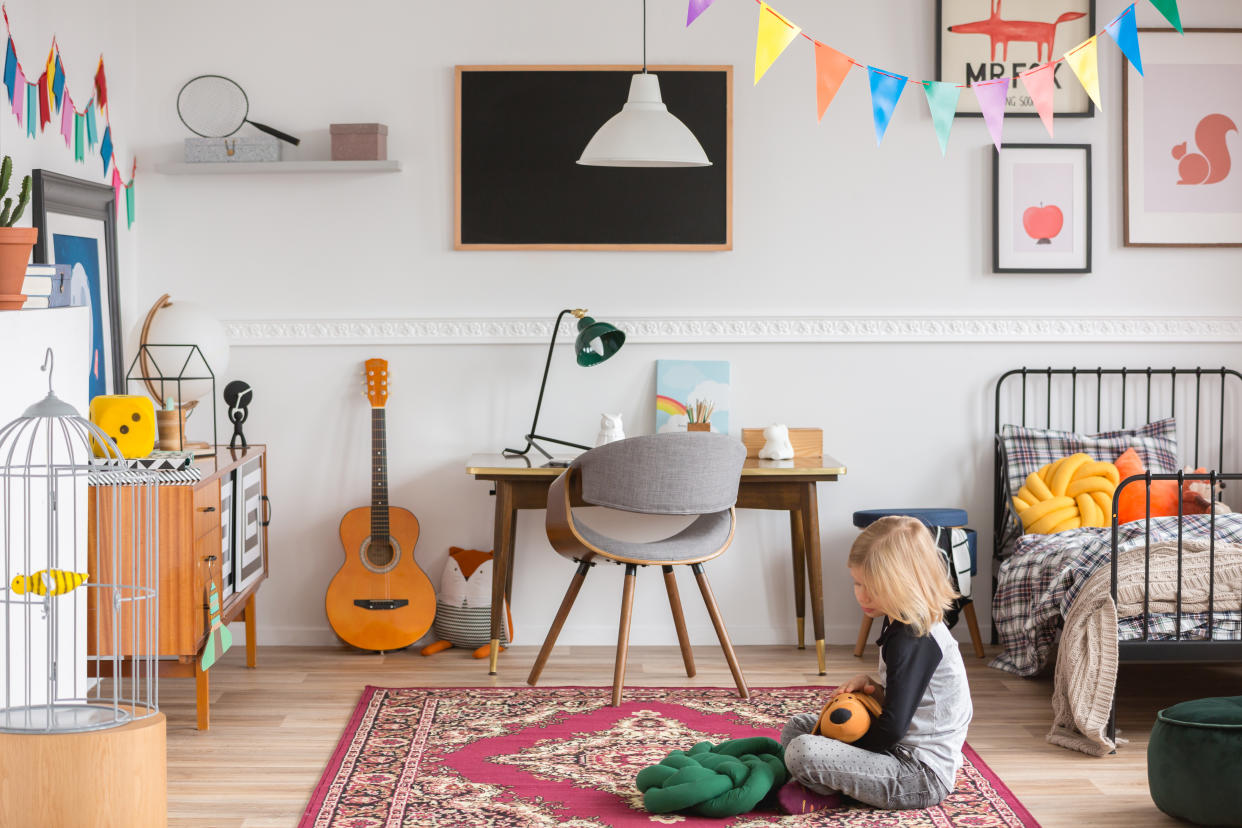Aspirational photos of homeschool stations, home offices are taking over Instagram. Here's how to create a workspace designed for everyone

When the global pandemic closed schools and offices around the country, homes were converted into classrooms and conference rooms, as parents winged work from home life. Months later, as schools reopen, many with distance learning models, savvier folks are showcasing revamped and aspirational home work stations on social media.
It’s fun to click through #homeschool and #homeclassroom hashtags with catalog-like photos of desk hutches, alphabet decals and cozy book nooks, but polished set-ups aren’t that practical for those with limited budgets or who share small spaces or computers. In fact, as long as children are comfortable and learning, their study spots are “utterly irrelevant,” Connecticut elementary school teacher Matthew Dicks wrote in a Slate parenting advice column.
“The idea that a workspace must be picture-perfect is a familiar comparison trap — but if a pandemic doesn’t release some of this pressure, what will?” Shoshanna Hecht, a New York-based executive and personal coach tells Yahoo Life. “You don’t need to create a classroom, just a dedicated space to work in.”
Perhaps you don’t have the room or resources to convert your garage into an open-air classroom or home office. Few people do. It’s more important to utilize the space you have. Designating one area — an oversized chair, the kitchen table or the firmest couch cushion — as your “office” or “school” will condition your brain to focus there. “The space doesn’t need to be bright and shiny, just intentional,” says Hecht. “I use a $25 folding table at home. It’s not pretty but it’s easy.”
However, be flexible. One space probably won’t accommodate a multitude of needs from children’s art and science projects to office conference calls, so don’t feel guilty about spreading out on the floor if necessary. “Structure will save your life, but you can also dance with it,” says Hecht.
Then, create an inspiring environment that appeals to your senses: Sound has been shown to boost brain power, whether it’s through classical music, nature or background noise. Colors like blue enhance creativity while red helps with detail-oriented tasks, according to one University of British Columbia study. Adding indoor plants to your workspace can improve air quality and concentration. “But if you know you won’t water plants, buy a fake one,” says Hecht. “Otherwise you’ll set yourself up for failure.”
If you decorate, do so with intention: Do you need that motivational sign or cute chalkboard? That depends on whether statement art makes you happy or your child is a visual learner. “Get the cute thing you saw online if it makes you happy or settled into your space, but question your impulse to buy it,” says Hecht. “Do you want it or need it?”
It might also be time to recreate any classic work habits (using your favorite coffee cup, keeping family frames within reach) or those coined when the pandemic began. “Trust your intuition,” says Hecht, “and don’t look for answers in a fancy lamp.”
For the latest coronavirus news and updates, follow along at https://news.yahoo.com/coronavirus. According to experts, people over 60 and those who are immunocompromised continue to be the most at risk. If you have questions, please reference the CDC’s and WHO’s resource guides.
How to maintain your physical and mental health during the pandemic
Taking care of a loved one with COVID-19? Here’s how to stay healthy
Q&A with Dr. Kavita Patel: How to keep your family safe and maintain your mental health
Read more from Yahoo Life:
You want parents to teach kids amid the coronavirus pandemic this fall? Pay us.
Why CNN's Dr. Sanjay Gupta is keeping his kids home from school during the coronavirus pandemic
Want daily wellness, lifestyle and parenting news delivered to your inbox? Sign up here for Yahoo Life’s newsletter.

